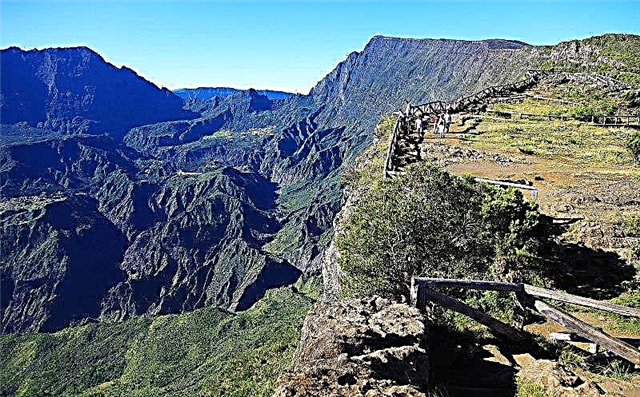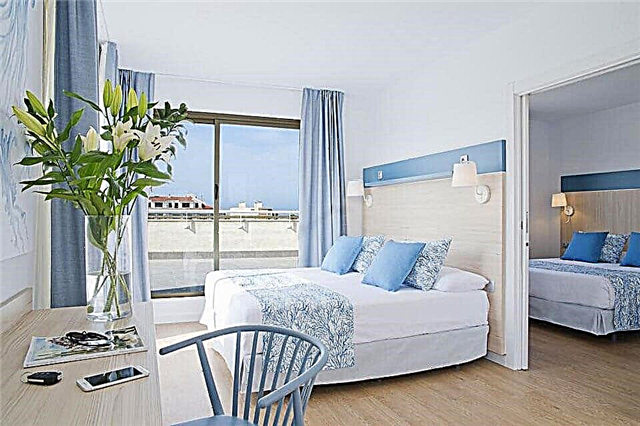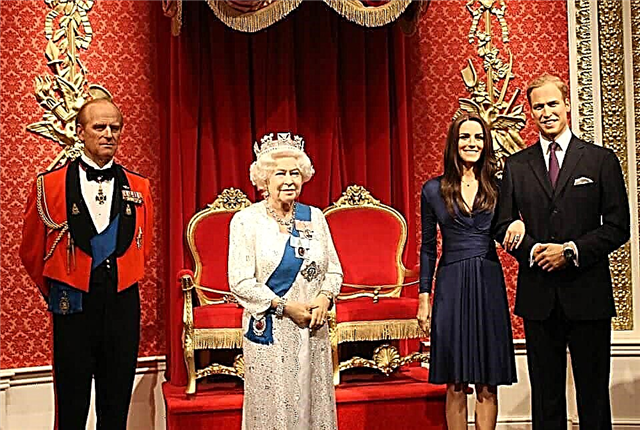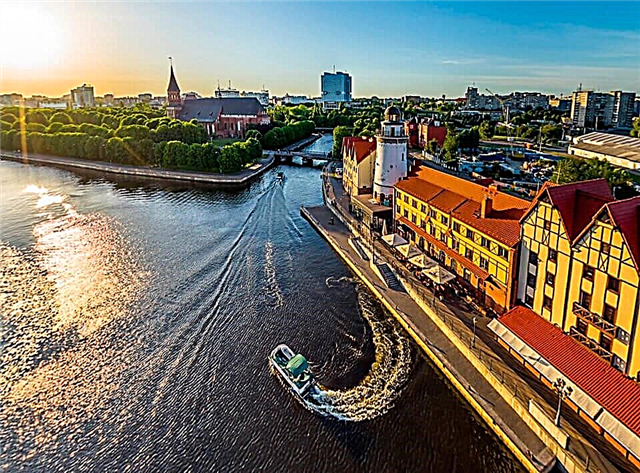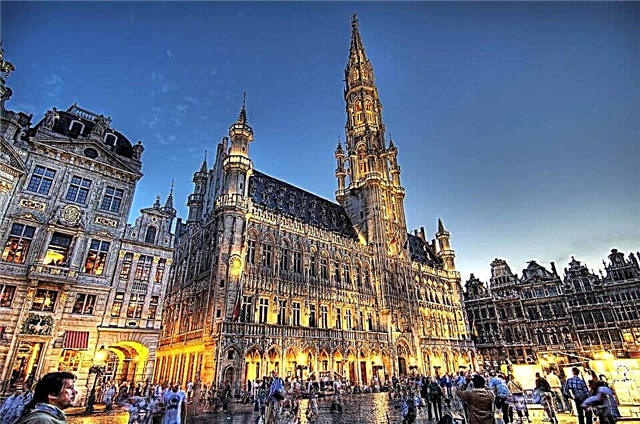Brussels is no less famous for its beauty than other European cities, but its charm is somewhat different - less warlike, more businesslike. Affected by the merchant past of the city. However, this did not prevent it from becoming one of the most picturesque reserves of Gothic architecture in Europe. So, what to see in Brussels in 1 day on your own? We tried to answer this question by compiling the most optimal route to get to know the city.
How to get from the airport to the center
To get from Charleroi airport to the center, you can use one of three options: take a bus, get to the city by train with a transfer, or simply order a taxi.
- The Brussels City Shuttle runs from the airport to the city. The first bus leaves at 07:55. Flights continue until midnight. If you want to save money, book your ticket online - then it will cost you 14 euros. If you buy directly on the spot - 17 euros. The journey takes an average of 55 minutes. Please note that the ticket will be valid until 4 am the next day. That is, you need to order it for the date, and not for the specific time of departure of the bus.
- Unfortunately, you won't be able to do without a change if you absolutely want to travel by train. To get started, you will need to take a bus to Charleroi Sud station (line A). The journey will take approximately 17 minutes. The ticket can be purchased online or at the machine at the exit from the airport number 2. The ticket will cost you 15.5 euros, but it covers both the bus and train travel. The road will take an hour and a half. Buses start running at half past 6 in the morning. Please note that there are no trains or public transport at night, so if you have a night flight, you will have to spend the night at the airport or take a taxi.
- Without a doubt, a taxi is the most comfortable option. They are served around the clock on a first come, first served basis, so waiting times can be up to 15 minutes. True, the price skyrockets - one trip can cost 93 euros in an economy class car and 123 euros in a minibus. You can book a taxi in advance, and then you will be met right at the exit from the arrivals area. The driver will have a sign with your name, so the risk of getting lost is minimal.
Royal Palace

Among the shady alleys of the Brussels Park, the Royal Palace is hidden, which today is used mainly for official receptions. Geographically, such a location was extremely successful, and therefore, as early as the twelfth century, Cowdenberg Castle was erected on the same site. It stood for over five centuries to be destroyed by fire. Soon the building began to be restored, but it was only a pale shadow of the Royal Palace that we know today.
Real gloss and grandeur became its attributes during the reign of Leopold II, who considered that he deserved to live in greater luxury, and not only significantly expanded the area of the building, but also made it a real personification of the power of royal power. Today, any tourist can see the Throne Room for free, and the Mirror Room, the ceiling of which is dotted not with stars, but with scarabs, and eleven golden pots that represent the provinces of Belgium.
Cathedral of St. Michael and Gudula

The cathedral stands on the Torenberg hill, which makes its already considerable height even more significant. Initially - from the eleventh century - there was a small Romanesque church of St. Michael, which was gradually rebuilt, but in accordance with the canons of the Gothic. Today, in the appearance of the cathedral, these two styles harmoniously overlap. Centuries passed, and gradually the city grew. Now the Cathedral of St. Michael and Gudula stands on the border between Old and New Brussels.
Massive stone steps lead to the main gate of the temple, and holy images huddle under the vaulted ceilings. The colorful stained glass windows depicting scenes from the life of the Virgin Mary created during the Renaissance, as well as the main cathedral pulpit, designed in the Baroque style, are especially delightful. It is decorated quite symbolically - at the foot there are scenes of the expulsion of Adam and Eve from the Garden of Eden, and above - the Mother of God with the Child and the Serpent, pierced by a spear. Organ music evenings are often held in the cathedral.
Monument to Charles Buls

Belgians are known for carrying love for their national heroes through the centuries. Moreover, the status of "heroes" is awarded not only to generals or notorious daredevils, but also to those people who allowed the country to step forward. Such was the burgomaster Charles Buls, who remained in the history of Belgium as a great statesman who contributed to the development of the urban economy and the improvement of the country as a whole. His fame burned most brilliantly at the turn of the nineteenth and twentieth centuries.
Today, the already middle-aged Charles Buls is still sitting relaxed at the edge of the fountain, tired of a walk. A dog flies to the great figure, which he gently pats on the head. Charles presses his hat to his chest, welcoming each guest from the future.
Royal Galleries of Saint Hubert

The Galleries of Saint Hubert strike the perfect balance between commercial spirit and high style. They are located along a long corridor covered with a glass roof that lets in a lot of light. Their discovery took place in the middle of the nineteenth century. According to the plan, the passage consisted of three parts: the galleries of the King, Queen and Prince, respectively.
The building met all the standards of the then popular neo-Renaissance. Of course, only the most prestigious stores could be located here, which are no less proud of their history than the galleries themselves. Here you can find antique jewelry, handmade cutlery, elegant hats and gloves, as well as chocolate from the most famous brands. The Galleries of Saint Hubert, despite their commercial orientation, regularly became the place where the Belgian intelligentsia spent their time.
Alexandre Dumas, Victor Hugo and other masters of the word were frequent guests of this place. And today a number of the oldest bookstores, a cinema, a theater, a photo gallery, as well as the Museum of Letters and Manuscripts are open here. Here you can see the records of many famous people of their time, from Brigitte Bardot to Albert Einstein.
Mountain of arts

The Mountain of Arts is one of the best viewing platforms in the city. It is located in the historical part and owes its creation to King Leopold II, who at the end of the nineteenth century decided to slightly "correct" the appearance of the city. The most densely populated area at that time, Saint-Roche, seemed superfluous to him. The solution was simple - all the buildings were bought out by the crown and given up for demolition. Unfortunately, this was the end of the funds. For a while, the hill gleamed with a bald head.
A dozen years later, they began actively looking for funds - the World Exhibition was approaching, which meant a frenzied influx of guests from abroad. A temporary garden appeared on the hill, a monumental staircase and even fountains - the waters cascaded the hill. As it usually happens, with the end of the exhibition, the park's "temporary" nature was forgotten, and for several decades the townspeople were able to enjoy the already beloved silence of the green patch on the map of the rapidly developing city.
Fortunately, the last transformation was the most successful. The appearance of the Mountain of Arts has not actually changed since the thirties of the last century. The ensemble came to an end when the buildings of the Congress and the Royal Library appeared on either side of the grown square.
High relief to Lord Everard

The Zvezda House with a pompous colonnade fits perfectly into the overall look of the Grand Place district. It is famous not only for its appearance, but also for the urban legend that tells of Lord Everard, who was once the master of the house. He went down in history as one of the most ardent patriots. Despite the fact that the years of his life fell on the fourteenth century, and after five centuries he was not forgotten.
At the end of the nineteenth century, Brussels craftsmen created a high relief depicting this hero in colors. It is believed that he found his death just at the Grand Place. Legend has it that if you touch his hand, your wish will come true. Whether it is true or not is difficult to say, but the years go by, and Lord Evarard's palms are becoming more and more worn.
Pissing boy

Most likely, this shocking monument was erected in the fourteenth century. It was stolen more than once, and, unfortunately, the sculpture that we see today is also not original. Why was it necessary to create such a strange statue and install it at the very busy intersection of Chen and Etuve streets? There are several options. The most famous is designed in a heroic style. Allegedly, the once enemy troops surrounded the city, which was not ready for a long siege.
They were about to light the fuse and blow up the city gates, but a boy urinated directly from the city wall, which put out the fuse. An equally popular version claims that once - back in the twelfth century - a two-year-old baby was supposed to become king, with which the numerous opposition did not agree. The true king's supporters hung the monarch's cradle on a tree from which he "watered" his enemies while the decisive battle lasted.
The third legend is more or less true. Allegedly, the son of one of the richest people in Brussels once disappeared. When the heir was found, he was just relieving himself. Happy with this outcome, the father ordered to cast a statue of his son in order to immortalize the moment of unity. Whichever version you follow, it's definitely worth seeing the main symbol!
Grand Place

The Grand Place is rightfully considered one of the most majestic in the city, however, it is not devoid of grace. The modern masterpiece of Gothic art appeared in hoary antiquity. To build the first square (back in the twelfth century), the swamps had to be drained. The work paid off - later it was here that all the most significant events in the life of the city took place.
A number of unexpected transformations took place with the square. For example, by the thirteenth century, it was here that the Bread Yard was erected, which after a few decades turned into the King's House - the most precious treasure of the square. The heyday of the Grand Place came at the time of the wealth of the guilds - the luxurious Baroque houses were soon supplemented with Gothic monuments, which are still considered part of the world heritage today.
Town Hall

This beautiful monument in the late Gothic style is one of the main symbols of the capital and the main dominant of the Grand Place. Construction began in the early years of the fifteenth century. It was a series of architectural oversights, which together gave an excellent result. Initially, only a bell tower with a left wing was rebuilt, then it was considered that symmetry should remain symmetry - it was required to complete the right wing, which - oh, horror! - turned out to be shorter than the left.
To smooth out the skewed perspective, they decided to replace the tower, which soon became one of the tallest buildings in Brussels. It is crowned with the figure of the Archangel Michael, who is the patron saint of the city. He conquered the demon lying at his feet. Unfortunately, the facade of the modern City Hall was not fully preserved - the French soldiers largely destroyed it. The last restoration took place in the middle of the twentieth century, when most of the statues appeared on the facade. Tourists can view the monument not only from the outside, but also from the inside.
King's house

It is difficult to name another building offhand, which just as often changed its appearance. And the House of the King had a lot of opportunities, because it appeared on the Grand Place in the thirteenth century as a warehouse for bread. Soon, not bakery products, but criminals began to languish here - the future King's House became a prison. The shadow did not cover the building for long, and soon it became the dukes' dwelling house, changing its appearance to a more befitting one.
It would seem that from a duke to a king is quite a long way, but it can also be shortened if the king is not real. We are talking about the times of the Napoleonic conquests, when a French governor settled in Brussels, who, in fact, replaced the king. Each new owner changed the building according to his needs, but the meters were reset in the nineteenth century when the old drawings were brought up, according to which the building was reconstructed.
Today it is an example of the Gothic art of the fifteenth century. Inside there are expositions of the city museum, where, among the masterpieces of painting, all 650 costumes are kept, which at different times were donated to the Manneken Pis statue.

Guilds were of great importance for the development of the city, because for a long time it was they who owned really significant funds. And most of them chose to sit right on the Grand Place. So, in the building of the Baker's Guild, which is called the "King of Spain", on the ground floor there is a cafe of the same name, where beer fans are usually advised to go. The archers' guild is located in the "She-Wolf".
The building is quite simple to distinguish - the dragon Python is depicted on the facade, which was shot from a bow by Apollo. The building of the haberdasher's guild, "Fox", was distinguished by the presence of Atlanteans who support the vaults of the first floor, as well as the presence of a gilded fox, which sits at the entrance. Perhaps the only building whose design does not raise any questions is the "Horn". The top floor is made in the form of the stern, which subtly hints that it belongs to the boatmen's guild.
Cocoa and Chocolate Museum

Belgium is one of the main chocolate makers in the world, however, chocolate appeared here only in the middle of the eighteenth century and at first was used exclusively for medicinal purposes. It is up to the Belgians to create the first filled candies, without which it is difficult to imagine the world of sweets today! The Chocolate Museum is by no means huge - it is a cozy two-story house, which is hiding in one of the alleys that run off from the Grand Place.
If you are afraid of getting lost or do not trust the cards, trust your nose - the aroma of melted chocolate is difficult to confuse with anything else! By purchasing a ticket to the museum, you can not only get acquainted with the history of the chocolate extravaganza, but also observe the process of making Belgian chocolate shells, which are well known all over the world. Of course, you won't be able to do without a tasting!
Stock Exchange

The modern Stock Exchange building is one of the most characteristic buildings from the Second Empire period. Initially, this place was a monastery, and then a shopping arcade. The construction of the exchange began by decree of Napoleon Bonaparte, but the first building was not as pompous as its modern counterpart. Fortunately, the exchange worked more than successfully, and therefore its second project appeared, but already in the neo-renaissance style.
Then the powerful columns in the pretentious Corinthian style, graceful capitals, as well as metaphorical images of Belgium, adorning the triangular pediment, grew up. Pay special attention to the sculptural compositions that are on the roof. They are by Auguste Rodin, one of the greatest sculptors of his time.
Church of St. Nicholas

This is one of the earliest churches. Its construction dates back to the twelfth century. Its old name also mentions the Brussels Stock Exchange, since the church is located not far from it.The church of St. Nicholas was built at the expense of fishermen who traded in the neighboring port. The craftsmen did not have to rebuild everything from scratch - they just started building walls on the old foundations of a Romanesque church.
Almost the entire modern building is a patchwork that appeared at different times. So, the first tower with a huge bell appeared almost immediately, but the chapel of the Mother of God only a few centuries later. After a terrible storm of the fourteenth century, the choirs remained here. Small reconstructions took place during the battles between Protestants and Catholics, which partially destroyed the church, and after the Second World War, when it was damaged by bombing.
Pee Girl and Delirium Bar

This bar is widely known among the most ardent fans of the amber drink. And the beer of the same name is worthy of its reputation - Delirium Tremens has officially become the best beer in history more than once. The European bar culture has found its brightest manifestation here. The menu contains more than two thousand brands of beer, which automatically allowed Delirium to be included in the Guinness Book of Records.
So far, no one has tried to take this status from the bar. Here you can taste both classic beer brands and beer with banana, chocolate and other sweets flavors. The atmosphere of this basement is also colorful - there are beer lids and mugs on the ceiling, and old English and French posters are fixed on the walls. The bar is across the street from the Manneken Pis statue, a couple-parody of the Manneken Pis statue that is known around the world.
Belgian Comic Strip Center

The Comics Museum is housed in an Art Nouveau building, designed according to the drawings of Victor Hort, the brightest representative of his direction. As you might guess, the expositions illuminate the world of comics and animation. Here are the works of all the outstanding masters of the art of creating comics, from the author of the popular Tantin in Belgium - Enge and ending with Peyot himself.
Each master was fully respected by allocating separate rooms for exhibitions. The material is presented in a fascinating way, and therefore the exhibition will be interesting for adults from a cultural point of view, and for children it will be a bright immersion in the world of colors and action. There was also a place in the museum for an animation hall, however, purely Belgian.
The museum has a reading room with more than an impressive collection of comics, as well as a training center. The founders of the museum did not forget about Orta - a separate room was allocated for him, so if you wish, you can also get to know this brilliant architect. The museum regularly hosts temporary exhibitions dedicated to contemporary art.
Park complex Laken

Laken is the most beautiful area, appeared at a time when the city from a purely merchant became a political and cultural center. It is in the appearance of this quarter that all the expression of that era is best reflected. Today it is not only a historical center, but also an architectural and cultural one. Particular attention is traditionally given to the park complex of the same name, on the territory of which the Royal Palace of Laken (closed today for visiting) could be located, without embarrassing each other; the Museum of the Far East, the complex of which includes a tower in the Japanese style, as well as a Chinese pavilion, immediately setting a completely different atmosphere; as well as flower greenhouses - a real fleeting art that is reborn again and again. Unfortunately, the latter are open for visits only once a year.
Notre Dame de Laquen

The Church of Notre Dame de Laquin is known not only as a purely religious building, but also as the tomb of all Belgian monarchs. The first chapel was built in the thirteenth century, but by the nineteenth century it was completely dilapidated, and it was no longer possible to continue services in it. The construction of the new church was entrusted to Joseph Poulart, then a very young architect, who, however, showed some hope.
He approached with all originality the creation of a Gothic temple with an abundance of turrets and spiers. The old chapel was not completely destroyed - the asp remained from it, which was later turned into a chapel. There is one more reminder of those dark years - the statue of the Virgin Mary, which is more than seven centuries old. This truly unique piece of medieval art is one of the church's treasures.
Today, the burial vault contains the ashes of twenty representatives of the royal dynasty. There is also a cemetery around the temple. It is somewhat reminiscent of the French Père Lachaise - all the same magnificent crypts and gravestones of the most famous families and individuals.
Atomium

At first glance, it may seem that the metal model of the iron molecule is nothing more than another monument, an echo of the technical and scientific revolution of the twentieth century, however, upon closer inspection, it turns out that the monument is not just huge, it is colossal. Thus, each sphere is eighteen meters in diameter, which made it possible to locate inside the exhibition and even a mini-hotel where it is quite possible to stay overnight.
As a rule, all the exhibitions that open here, in one way or another, highlight the issues of science. For example, one of the permanent exhibitions tells about the history of atomic energy and its applications. The Atomium is not only a symbol and monument, but also an observation deck. The panorama of the city with its temples, palaces and narrow old streets stretches right under your feet.
Mini Europe

The idea of creating a museum of miniature models of well-known architectural monuments is by no means new, but this did not prevent the Belgians from opening their own version of Mini-Europe. There is a certain irony in its placement - a tiny model of a whole piece of the planet is hiding in the shadow of a huge iron molecule - the Atomium. Big Ben, the Palace of Westminster, the Acropolis of Athens and other historical sites alternate with installations on the brightest pages in the life of Europe.
The eruption of Vesuvius, the bullfight in Seville, as well as the momentous day of the fall of the Berlin Wall were reflected here. In total, more than three hundred models are collected here, and their number continues to grow.

